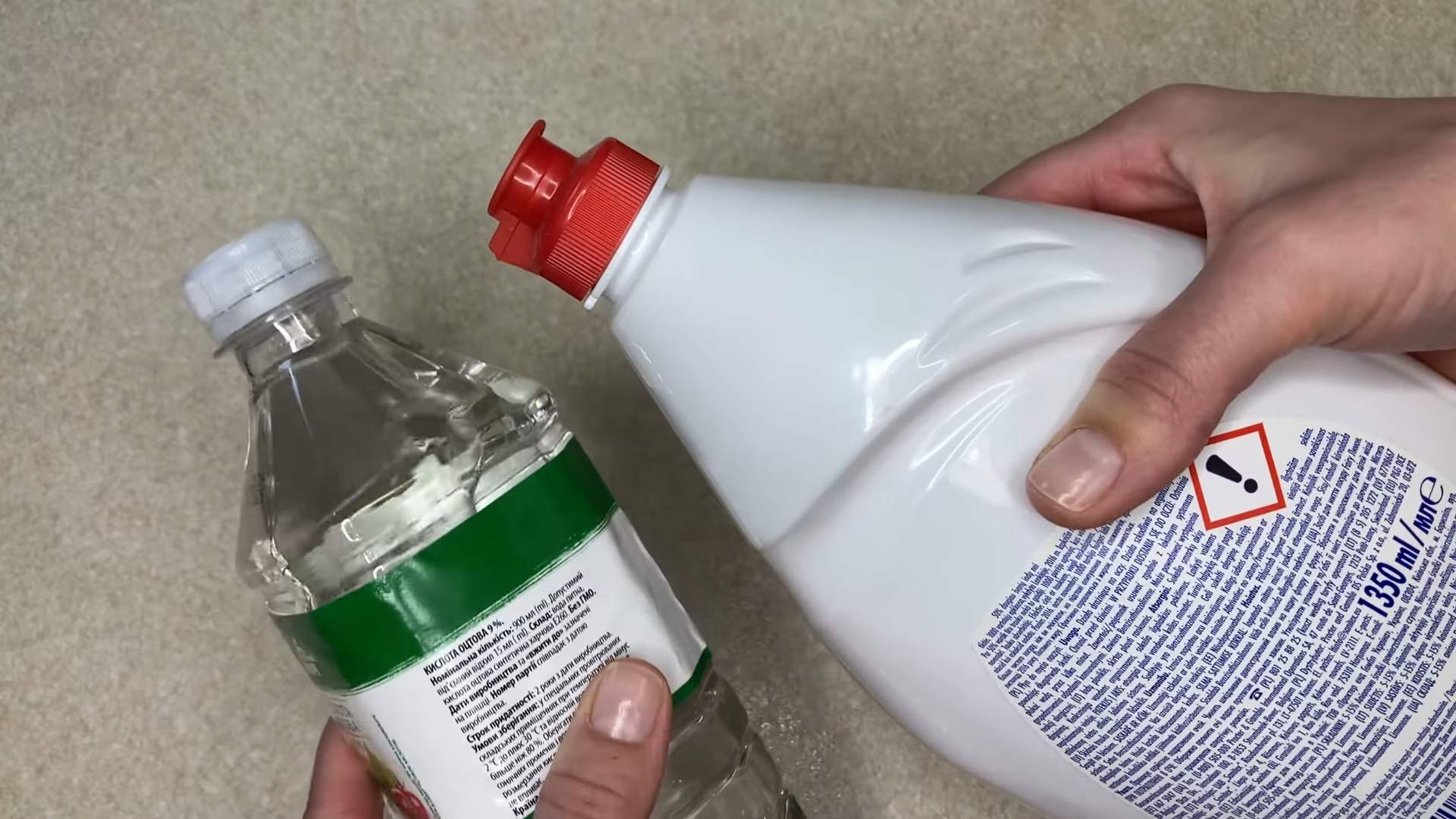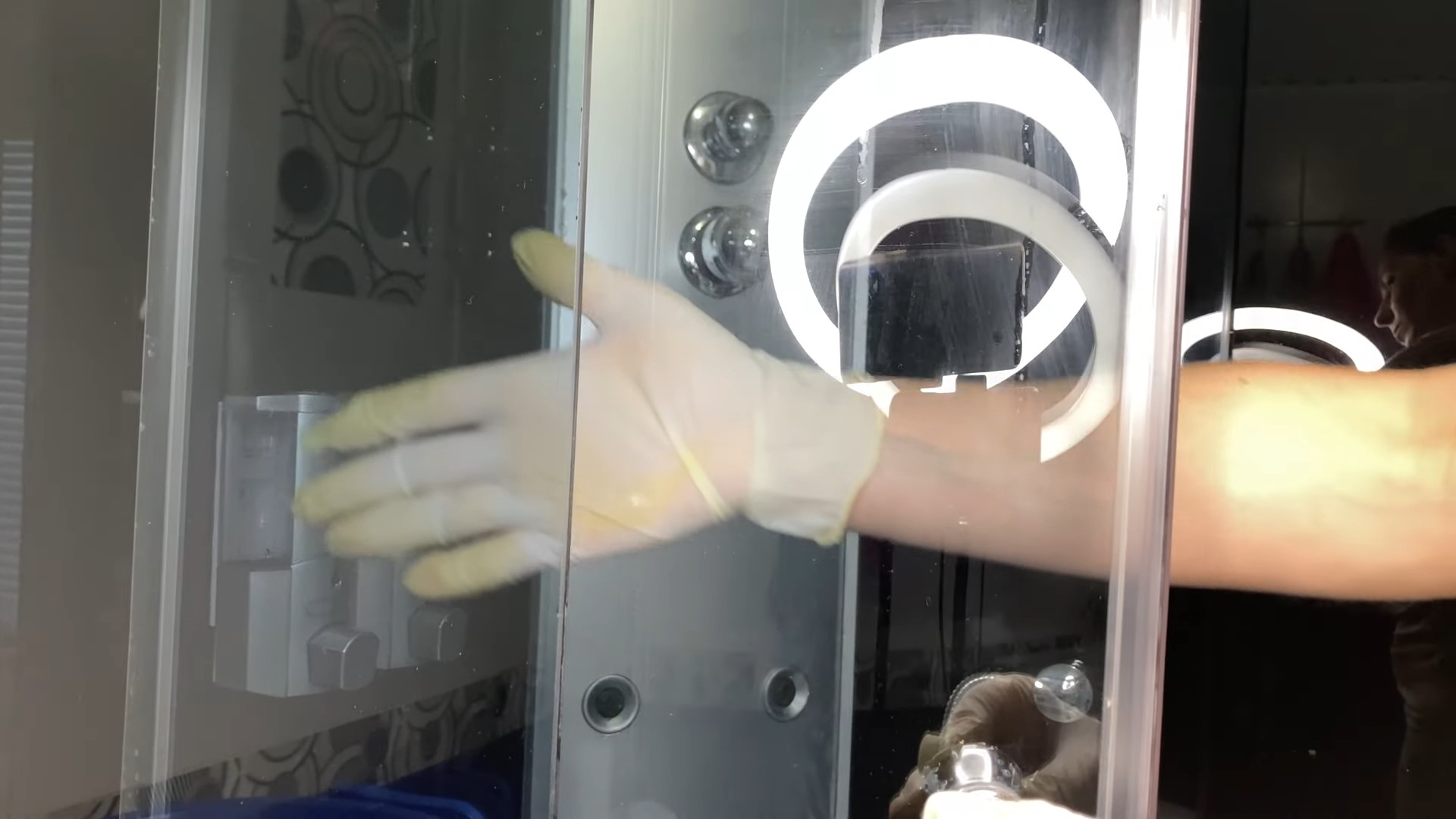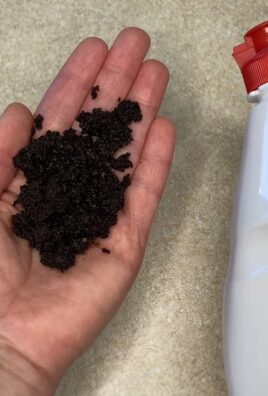Dish Soap Vinegar Cleaning Hack: Ever feel like you’re battling grime with one hand tied behind your back? I know I have! We’ve all been there, staring down a sink full of dirty dishes or a grimy shower, wishing there was a magic bullet to make the cleaning process easier and more effective. Well, guess what? There might just be one hiding in your pantry!
For generations, resourceful homemakers have sought simple, effective cleaning solutions. Think about it – before the age of specialized cleaning products, people relied on natural ingredients like vinegar and soap to keep their homes sparkling. This tradition of resourcefulness is something I deeply admire, and it’s what inspired me to explore the power of this particular DIY cleaning hack.
This dish soap vinegar cleaning hack isn’t just about saving money (though that’s a definite perk!). It’s about creating a powerful, all-purpose cleaner that’s gentle on the environment and surprisingly effective on a wide range of surfaces. In today’s world, where we’re all looking for ways to simplify our lives and reduce our reliance on harsh chemicals, this simple trick is a game-changer. I’m excited to share this easy-to-follow guide that will help you unlock the cleaning potential of these two common household ingredients and transform your cleaning routine!

DIY All-Purpose Dish Soap and Vinegar Cleaning Solution
Okay, so you’re tired of spending a fortune on cleaning products filled with mystery chemicals? Me too! That’s why I’m going to share my absolute favorite DIY cleaning hack: a simple, effective, and budget-friendly all-purpose cleaner made with just dish soap and vinegar. Trust me, this stuff is amazing! It tackles grime, grease, and everyday messes like a champ, and it smells way better than straight vinegar. Let’s get started!
What You’ll Need
Before we dive in, let’s gather our supplies. This is a super simple recipe, so you probably already have everything you need.
* Empty spray bottle (a clean, recycled one is perfect!)
* White vinegar
* Dish soap (I prefer a clear, unscented one to avoid any weird color combinations or overpowering scents, but any dish soap will work)
* Water (optional, but recommended for diluting the vinegar smell)
* Measuring cup or spoons
* Funnel (optional, but it makes pouring easier)
Why This Works
You might be wondering, “Vinegar and dish soap? Really?” Yes, really! Here’s the science behind the magic:
* Vinegar: Vinegar is a natural disinfectant and degreaser. Its acidity helps to break down grime, soap scum, and hard water stains. It’s also a great deodorizer.
* Dish Soap: Dish soap is designed to cut through grease and lift dirt. It helps to emulsify the vinegar and water, creating a more effective cleaning solution.
* The Combination: Together, vinegar and dish soap create a powerful cleaning duo that can tackle a wide range of household messes.
Important Note: While this cleaner is generally safe for most surfaces, it’s always a good idea to test it in an inconspicuous area first, especially on delicate surfaces like marble or granite. Avoid using it on waxed wood, as the vinegar can strip the wax.
Making the Cleaning Solution
Alright, let’s get to the fun part! Here’s how to make your own all-purpose cleaner:
1. Prepare Your Spray Bottle: Make sure your spray bottle is clean and dry. This will prevent any contamination of your cleaning solution.
2. Add Vinegar: Pour 1 cup of white vinegar into the spray bottle.
3. Add Dish Soap: Add 1 tablespoon of dish soap to the spray bottle. Important: Don’t add too much dish soap! Too much soap can make the solution sticky and leave a residue.
4. Add Water (Optional): If you want to dilute the vinegar smell, add 1 cup of water to the spray bottle. This is totally optional, but I usually add water because I’m not a huge fan of the strong vinegar scent.
5. Close and Shake Gently: Secure the spray bottle lid tightly and shake the bottle gently to combine the ingredients. Avoid shaking too vigorously, as this can create excessive suds.
6. Label Your Bottle: Label your spray bottle clearly with “Dish Soap & Vinegar Cleaner” so you don’t accidentally mistake it for something else.
Using Your All-Purpose Cleaner
Now that you’ve made your cleaning solution, it’s time to put it to work! Here are some of the ways I use this cleaner around my house:
* Kitchen Counters: Spray the cleaner on your kitchen counters and wipe clean with a damp cloth. It’s great for removing grease splatters and food stains.
* Bathroom Surfaces: Use it to clean bathroom counters, sinks, and toilets. It helps to remove soap scum and hard water stains.
* Shower Doors: Spray the cleaner on your shower doors and let it sit for a few minutes before wiping clean. It helps to prevent soap scum buildup.
* Floors: Add a small amount of the cleaner to a bucket of water and use it to mop your floors. Important: Test the cleaner in an inconspicuous area first to make sure it doesn’t damage your flooring.
* Appliances: Use it to clean the exterior of your appliances, such as your refrigerator, oven, and microwave.
* Windows and Mirrors: Spray the cleaner on your windows and mirrors and wipe clean with a microfiber cloth for a streak-free shine.
* Greasy Stovetop: Spray the solution liberally on the stovetop, let it sit for 5-10 minutes to loosen the grease, and then wipe clean. For stubborn spots, use a non-abrasive scrub pad.
* Inside the Microwave: Heat a cup of water with a few tablespoons of the cleaning solution in the microwave for a few minutes. The steam will loosen the grime, making it easy to wipe clean.
* Cleaning Sponges: Soak your sponges in a solution of the cleaner and hot water to disinfect them.
Troubleshooting
Sometimes, things don’t go exactly as planned. Here are a few common issues you might encounter and how to fix them:
* Too Many Suds: If you added too much dish soap, the solution might be too sudsy. Try diluting it with more water.
* Sticky Residue: If you’re noticing a sticky residue after cleaning, it could be due to hard water or too much dish soap. Try using less dish soap or rinsing the surface with clean water after cleaning.
* Strong Vinegar Smell: If you’re sensitive to the smell of vinegar, try adding a few drops of your favorite essential oil to the cleaning solution. Lemon, lavender, and eucalyptus are all great options.
* Cloudy Solution: Sometimes, the solution can appear cloudy. This is usually due to the dish soap and vinegar reacting with each other. It doesn’t affect the cleaning power of the solution.
Tips and Tricks
Here are a few extra tips and tricks to help you get the most out of your DIY cleaning solution:
* Use Warm Water: Warm water helps to dissolve grease and dirt more effectively.
* Let it Sit: For tough stains, let the cleaner sit on the surface for a few minutes before wiping clean.
* Use a Microfiber Cloth: Microfiber cloths are great for cleaning because they trap dirt and dust without leaving streaks.
* Make a Paste: For really stubborn stains, you can make a paste by mixing the cleaning solution with baking soda. Apply the paste to the stain, let it sit for a few minutes, and then scrub clean.
* Experiment with Scents: Feel free to experiment with different essential oils to create your own custom scent.
* Adjust the Ratio: Depending on the type of mess you’re cleaning, you may need to adjust the ratio of vinegar to dish soap. For greasy messes, you might want to use more dish soap. For hard water stains, you might want to use more vinegar.
* Don’t Mix with Bleach: Never mix vinegar with bleach, as this can create toxic fumes.
Storage
Store your cleaning solution in a cool, dark place away from direct sunlight. The solution should last for several months. If you notice any changes in color or odor, discard the solution and make a fresh batch.
Safety Precautions
While this cleaning solution is generally safe, it’s still important to take a few safety precautions:
* Keep out of reach of children and pets.
* Avoid contact with eyes. If contact occurs, rinse thoroughly with water.
* Do not ingest. If ingested, seek medical attention.
* Test in an inconspicuous area before using on delicate surfaces.
* Do not mix with bleach or other cleaning products.
Cleaning Different Surfaces
Here’s a breakdown of how to use the dish soap and vinegar cleaner on specific surfaces:
Cleaning Glass and Mirrors
For streak-free glass and mirrors:
1. Spray a light mist of the cleaning solution onto the surface.
2. Immediately wipe with a clean, dry microfiber cloth.
3. If streaks appear, try using a slightly damp microfiber cloth followed by a dry one.
4. Avoid using paper towels, as they can leave lint behind.
Cleaning Stainless Steel
To clean and shine stainless steel appliances:
1. Spray the cleaning solution onto a microfiber cloth.
2. Wipe the stainless steel surface in the direction of the grain.
3. Buff with a clean, dry microfiber cloth to remove any streaks.
4. Avoid using abrasive cleaners or scrub pads, as they can scratch the surface.
Cleaning Wood Surfaces
Important: Test the cleaner in an inconspicuous area first, as vinegar can damage some wood finishes.
1. Spray a small amount of the cleaning solution onto a microfiber cloth.
2. Wipe the wood surface gently.
3. Immediately dry the surface with a clean, dry cloth.
4. Avoid using the cleaner on waxed wood, as it can strip the wax.
Cleaning Tile and Grout
For cleaning tile and grout in bathrooms and kitchens:
1.

Conclusion
So, there you have it! The dish soap vinegar cleaning hack – a simple, effective, and surprisingly powerful solution for tackling a multitude of cleaning challenges around your home. We’ve explored how this dynamic duo, readily available in most households, can cut through grease, grime, and stubborn stains with ease. But why is this DIY trick a must-try?
Firstly, it’s incredibly cost-effective. Compared to purchasing specialized cleaning products for every nook and cranny, dish soap and vinegar are budget-friendly alternatives that deliver impressive results. Secondly, it’s a more environmentally conscious choice. By reducing your reliance on harsh chemicals, you’re contributing to a healthier home and a cleaner planet. Many commercial cleaners contain ingredients that can be harmful to both your family and the environment. This DIY solution minimizes those risks.
Thirdly, the versatility of this cleaning hack is truly remarkable. From sparkling shower doors to gleaming kitchen counters, the applications are virtually endless. It’s a one-stop solution for many of your cleaning needs, simplifying your routine and decluttering your cleaning cabinet. And finally, it’s incredibly easy to prepare and use. No complicated instructions or specialized equipment are required. Just mix, spray, and wipe!
But the beauty of this dish soap vinegar cleaning hack lies not only in its simplicity but also in its adaptability. Feel free to experiment with variations to suit your specific needs and preferences. For instance, adding a few drops of your favorite essential oil, like lemon or lavender, can infuse your cleaning solution with a refreshing scent. For tougher stains, consider increasing the concentration of vinegar or allowing the solution to sit for a longer period before wiping. You can also use different types of dish soap. A grease-cutting dish soap will be more effective on oily messes, while a gentle dish soap is ideal for delicate surfaces.
Another great variation is to use infused vinegar. Simply steep citrus peels (lemon, orange, grapefruit) or herbs (rosemary, thyme, lavender) in white vinegar for a few weeks. This adds a pleasant fragrance and potentially enhances the cleaning power. Remember to strain the vinegar before mixing it with dish soap.
We encourage you to embrace this DIY cleaning trick and experience the difference it can make in your home. It’s a simple yet powerful way to achieve a sparkling clean without breaking the bank or compromising your health.
Don’t just take our word for it – try it yourself! We’re confident that you’ll be amazed by the results. And most importantly, we want to hear about your experience. Share your tips, tricks, and success stories in the comments below. Let’s build a community of DIY cleaning enthusiasts and discover even more ways to harness the power of dish soap and vinegar. What surfaces did you clean? What variations did you try? What were your results? Your feedback will help others discover the full potential of this amazing cleaning hack. Let us know if you have any questions, too!
Frequently Asked Questions (FAQ)
Is the dish soap vinegar cleaning hack safe for all surfaces?
While the dish soap vinegar cleaning hack is generally safe for most surfaces, it’s always a good idea to test it in an inconspicuous area first, especially on delicate or sensitive materials like natural stone (marble, granite), waxed wood, or painted surfaces. The acidity of vinegar can potentially damage or discolor these surfaces. For these types of surfaces, consider using a diluted solution or opting for a gentler cleaning method. Always check the manufacturer’s recommendations for cleaning specific items or surfaces.
What is the best ratio of dish soap to vinegar?
The most commonly recommended ratio is a 1:1 mixture of dish soap and vinegar. However, you can adjust the ratio based on the severity of the cleaning task. For light cleaning, you can use a weaker solution with more water. For tougher stains or greasy messes, you can increase the concentration of vinegar. A good starting point is 1 cup of vinegar and 1 cup of dish soap in a spray bottle, then adjust as needed. Remember to shake the bottle gently before each use to ensure the ingredients are properly mixed.
Can I use any type of vinegar for this cleaning hack?
White distilled vinegar is generally recommended for cleaning due to its high acidity and lack of color, which minimizes the risk of staining. However, you can also use apple cider vinegar, although it has a slightly lower acidity and a distinct odor. Avoid using balsamic vinegar or red wine vinegar, as they can stain surfaces.
Why does the mixture sometimes separate?
Dish soap and vinegar are not naturally miscible, meaning they don’t readily mix together. This can cause the mixture to separate over time. To prevent this, use a good quality dish soap and shake the bottle well before each use. You can also add a small amount of glycerin (available at most pharmacies) to help emulsify the mixture and prevent separation.
Does this cleaning hack disinfect?
While vinegar has some antibacterial properties, it is not a disinfectant in the same way as bleach or other commercial disinfectants. It can kill some germs and bacteria, but it may not be effective against all types of pathogens. If you need to disinfect a surface, it’s best to use a dedicated disinfectant product. However, the dish soap vinegar cleaning hack is excellent for cleaning and removing dirt and grime, which can help reduce the number of germs on a surface.
Can I use this cleaning hack on my clothes?
Yes, you can use a diluted dish soap vinegar cleaning hack on clothes to remove stains and odors. However, it’s important to test it on an inconspicuous area of the fabric first to ensure it doesn’t cause any discoloration or damage. For delicate fabrics, use a very diluted solution and avoid rubbing the fabric too vigorously. Vinegar can also be used as a natural fabric softener in the washing machine.
How long does the cleaning solution last?
The dish soap vinegar cleaning solution can last for several weeks or even months if stored properly in a sealed container. However, the effectiveness of the solution may decrease over time, especially if it’s exposed to air or sunlight. It’s best to make a fresh batch every few weeks to ensure optimal cleaning power.
What are some other uses for this cleaning hack?
Besides cleaning surfaces, the dish soap vinegar cleaning hack can also be used to:
* Clean shower heads: Soak the shower head in a bag filled with the solution overnight to remove mineral buildup.
* Unclog drains: Pour the solution down the drain, let it sit for 30 minutes, then flush with hot water.
* Clean toilet bowls: Pour the solution into the toilet bowl, let it sit for a few minutes, then scrub and flush.
* Clean windows and mirrors: Spray the solution on the surface and wipe clean with a microfiber cloth.
* Remove hard water stains: Apply the solution to the affected area, let it sit for a few minutes, then scrub and rinse.
Are there any surfaces I should absolutely avoid using this on?
Yes, avoid using the dish soap vinegar cleaning hack on the following surfaces:
* Natural stone (marble, granite): The acidity of vinegar can etch or damage these surfaces.
* Waxed wood: Vinegar can strip the wax finish.
* Painted surfaces: Vinegar can dull or discolor paint.
* Electronics: Avoid spraying the solution directly on electronics, as it can damage the internal components.
* Cast iron cookware: Vinegar can remove the seasoning from cast iron.
Can I add baking soda to this mixture?
While baking soda is a great cleaning agent on its own, mixing it with vinegar in a closed container is not recommended. The combination creates carbon dioxide gas, which can cause pressure to build up and potentially explode the container. If you want to use baking soda and vinegar together, apply them separately to the surface you’re cleaning. First, sprinkle baking soda on the surface, then spray with vinegar. Let the mixture fizz for a few minutes, then scrub and rinse.


Leave a Comment